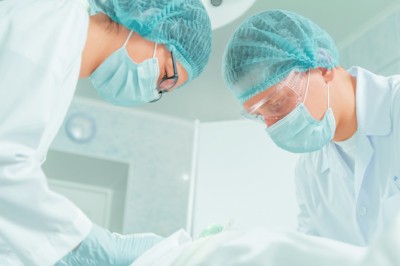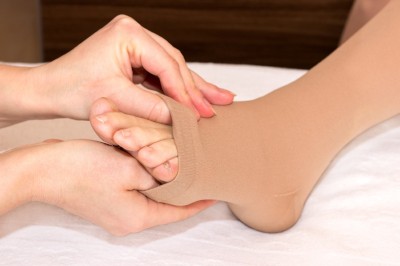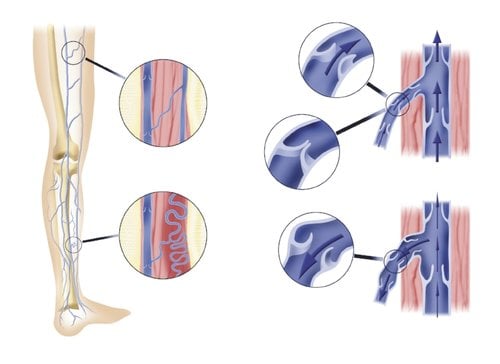Varicose and Spider Vein Treatments Pittsburgh

Varicose and Spider Vein Treatments Pittsburgh

What are these types of spider vein treatments?
We advise lifestyle changes first. Although if these Varicose and Spider Vein Treatments Pittsburgh fail, many effective medical treatments exist. They can both relieve existing symptoms and improve the leg’s cosmetic appearance. Among these Varicose and Spider Vein Treatments are:
It’s important that you seek help from a qualified professional. Several types of doctors you might see are:
- A Cosmetic Surgeon
- A General Surgeon
- A Podiatrist
Compression stockings
These specialized stockings put firm pressure on the legs, compressing the veins. There are three main varieties.
- Support hose provide the least amount of pressure.Support pantyhose, which offer the least amount of pressure. They do not provide pressure in the areas where it’s needed most, instead providing an overall pressure which isn’t as effective as targeted pressure.
- Over the counter (OTC) compression garments, which give more pressure yet still don’t provide it in a targeted manner. These can be bought in drugstores or medical equipment stores.
- Full strength prescription graduated compression hose. A Podiatrist can prescribed the stockings, and provide the targeted pressure which the other two varieties can’t. Our technicians must measure patients to ensure a proper fit and level of compression.
Radiofrequency and laser endovenous ablation:
This type of surgical procedure excels at treating the deeper veins. This ultimately causes both varicose and spider veins to close. Those are responsible for the majority of symptoms one associates with these conditions (achiness, pain, swelling, heaviness, fatigue, and other less common symptoms). These are in office procedures which take about one hour. Patients tolerate these well, and can treat even the most severe vein disorders.
A specialized catheter with a heating element at one end is used to thread the tip into the vein. Once your surgeon places it into the length of the vein, He activates this tip as he withdraws the catheter. Once heated, the vein walls are irreparably damaged, and the vein collapses in on itself and is permanently shut. As with other techniques, the vein is then absorbed back into the body as part of the natural healing process. Only local anesthesia such as lidocaine is necessary. This type of procedure is rapidly becoming the gold standard in vein treatments.
The blood which travels in the diseased vein immediately reroutes into nearby healthy veins. This improves circulation significantly. Varicose veins and spider veins fed by the treated vein no longer have a blood supply. They tend to shrink but not disappear completely. Any remaining surface veins we can “clean up” using sclerotherapy and laser treatments.
Microphlebectomy for spider vein treatments
a.k.a Ambulatory Phlebectomy. This approach physically removes larger surface varicose veins. We make tiny incisions over the vein which we then remove. Next we use small surgical hooks to pull the vein from beneath the skin. This procedure sounds rather severe, yet in practice patients tolerate it very well and don’t consider it an invasive procedure associated with long healing times. You only need local anesthesia. We can perform this type of surgery in your surgeon’s office, not in a hospital operating room (OR). Unless we treat an extensive area, only one appointment is usually necessary. We can even remove the largest veins via microphlebectomy. We rarely have unwanted adverse effects. Only mild bruising and pain which can be easily treated with over the counter drugs like ibuprofen are to be expected. Scarring is minimal or non-existent.
Can wearing compression stockings help with spider veins and varicose veins?
Yes, wearing compression stockings can be beneficial in managing and improving the symptoms of spider veins and varicose veins. Compression stockings are specialized elastic garments that apply pressure to the legs, promoting better blood flow and reducing the pooling of blood in the veins. They are designed to provide graduated compression, meaning the pressure is strongest at the ankles and gradually decreases as it moves up the legs.
Here’s how compression stockings can help with spider veins and varicose veins:
- Improving Blood Circulation: Compression stockings apply pressure to the veins, helping to support the walls of the blood vessels and improve blood circulation. This can reduce the symptoms of heaviness, swelling, and discomfort associated with spider veins and varicose veins.
- Reducing Swelling: The compression provided by the stockings can help prevent or reduce leg swelling (edema) by encouraging the movement of excess fluid back into the bloodstream.
- Alleviating Symptoms: Compression stockings can help relieve symptoms like pain, itching, and cramping associated with spider veins and varicose veins.
- Preventing Progression: Wearing compression stockings may slow down the progression of spider veins and varicose veins, preventing them from worsening over time.
- During Pregnancy: Compression stockings can be particularly beneficial for pregnant women who may experience increased pressure on their leg veins due to hormonal changes and the growing uterus.
Is it safe to exercise with spider veins and varicose veins?
Yes, it is generally safe to exercise with spider veins and varicose veins. In fact, regular physical activity can be beneficial as it promotes better blood circulation and can help alleviate symptoms like swelling and discomfort. Low-impact exercises such as walking, swimming, and cycling are particularly recommended as they put less strain on the veins. However, it’s essential to avoid high-impact activities and heavy weightlifting, as they can increase pressure on the veins.
Surgical intervention: THE OLD WAY…

- Surgical tying off and removal, known as ligation and stripping. We access diseased veins through surgical incisions. Then we tie them off. Ultimately, we physically remove them through these access incisions. The vein immediately shunts blood into nearby healthier veins. Overall it actually improves circulation. This can be a very invasive procedure, requiring general anesthesia, a lengthy hospital stay, and can take up to four weeks to heal completely. It’s a safe procedure, yet has fallen out of favor with the arrival of more modern techniques. Post surgical pain can be severe, requiring narcotic pain medication while healing occurs. Some potential complications can include:
- The risk of breathing problems which can occur with any general anesthesia. This is why an anesthesiologist must be present.
- Post surgical bleeding, which usually resolves on its own but may require follow up treatment.
- Incision infection, this we can easily treat with antibiotic drugs.
- Permanent scarring, which is not uncommon with this invasive approach.
- Nerve damage around the veins we remove. This can cause changes in the sense of touch, numbness, tingling, or other altered sensations. This usually isn’t permanent and resolves on its own.
- Deep Vein Thrombosis (DVT). This is a potentially life threatening complication when we perform any vascular surgery. This type of blood clot can break loose from the vein wall and travel to the lungs. Fortunately we can treat this with clot-busting drugs such as heparin, yet you must administer this carefully as it can create unwanted bleeding and large amounts of bruising.



